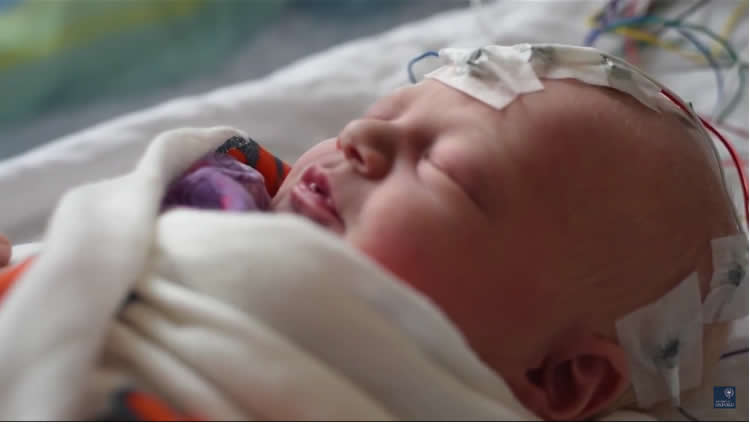Summary: Researchers have developed an EEG technique that can help monitor pain in infants. The believe the technology could have beneficial applications in testing pain and analgesic efficacy in older non-verbal patients also.
Source: Oxford University.
Researchers have developed a non-invasive means to measure whether infants are in pain, which could prevent babies from undergoing excessive discomfort during medical treatments.
One of the major challenges to assessing and managing pain in very young children is that they are unable to articulate their feelings. Instead, pediatricians must rely on observations of facial expressions or heart rates to infer whether babies are experiencing pain.
What’s more, administering pain relief can be problematic in small children because analgesics that are effective for adults might not be suitable for infants, who metabolize drugs differently – making the correct dosage difficult to calculate.
In order to determine a better metric of pain, Rebeccah Slater, Caroline Hartley and colleagues from the Department of Paediatrics at Oxford University established a measurement based on electroencephalographic (EEG) recordings of brain activity.
The researchers derived the EEG signature in a pilot study of 18 infants undergoing a routine and clinically-necessary heel-lance procedure for newborn blood screening, then went on to validate their results in four additional studies of 72 babies in total.

The EEG signature was also consistent in babies born preterm, as correlated with traditional means to infer pain (such as grimacing), and was distinct from brain activity changes associated with non-painful stimuli like flashing lights, gentle touches, or loud noises.
Additionally, topical anaesthetics reduced the magnitude of the brain scan signal. Overall the signature demonstrated 64% sensitivity with 65% specificity for the pain associated with heel-lancing and 57% sensitivity with 68% specificity for a lower-intensity stimulus. With further validation, this measure could be valuable for testing analgesic efficacy in nonverbal populations.
Rebeccah Slater describes ongoing work to discover how infants feel pain – and how the field might develop in future
Source: Oxford University
Image Source: NeuroscienceNews.com image is adapted from the Oxford University video.
Video Source: The video is credited to the University of Oxford.
Original Research: Abstract for “Nociceptive brain activity as a measure of analgesic efficacy in infants” by Caroline Hartley, Eugene P. Duff, Gabrielle Green, Gabriela Schmidt Mellado, Alan Worley, Richard Rogers and Rebeccah Slater in Science Translational Medicine. Published online May 2 2017 doi:10.1126/scitranslmed.aah6122
[cbtabs][cbtab title=”MLA”]Oxford University “Using Simple Brain Scan to Detect Pain in Infants.” NeuroscienceNews. NeuroscienceNews, 4 May 2017.
<https://neurosciencenews.com/eeg-pain-infants-6587/>.[/cbtab][cbtab title=”APA”]Oxford University (2017, May 4). Using Simple Brain Scan to Detect Pain in Infants. NeuroscienceNew. Retrieved May 4, 2017 from https://neurosciencenews.com/eeg-pain-infants-6587/[/cbtab][cbtab title=”Chicago”]Oxford University “Using Simple Brain Scan to Detect Pain in Infants.” https://neurosciencenews.com/eeg-pain-infants-6587/ (accessed May 4, 2017).[/cbtab][/cbtabs]
Abstract
Nociceptive brain activity as a measure of analgesic efficacy in infants
Pain in infants is undertreated and poorly understood, representing a major clinical problem. In part, this is due to our inability to objectively measure pain in nonverbal populations. We present and validate an electroencephalography-based measure of infant nociceptive brain activity that is evoked by acute noxious stimulation and is sensitive to analgesic modulation. This measure should be valuable both for mechanistic investigations and for testing analgesic efficacy in the infant population.
“Nociceptive brain activity as a measure of analgesic efficacy in infants” by Caroline Hartley, Eugene P. Duff, Gabrielle Green, Gabriela Schmidt Mellado, Alan Worley, Richard Rogers and Rebeccah Slater in Science Translational Medicine. Published online May 2 2017 doi:10.1126/scitranslmed.aah6122






